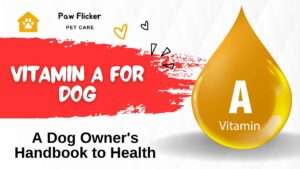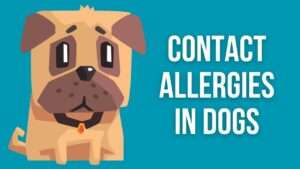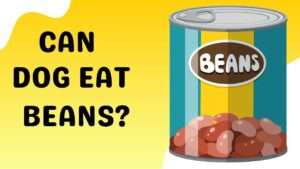Ever been tempted to share your juicy nectarine with your furry friend?
While the thought may seem harmless, it’s essential to understand what’s safe for your canine companion.
Can dogs eat nectarines?
Let’s dive into the details to ensure your pup’s health and happiness.
Contents Overview
What is Nectarine
A nectarine is a delicious fruit closely related to the peach, characterized by its smooth skin and sweet, juicy flesh.
Unlike peaches, nectarines have smooth skin without the fuzz, making them easier to eat. They come in various colors, including shades of yellow, orange, and red, and are packed with vitamins and minerals, making them a nutritious snack.
Nectarines can be enjoyed fresh, added to fruit salads, or used in desserts, offering a refreshing and flavorful addition to any meal.
Nutritional Value of Nectarine
Nectarines boast a rich nutritional profile, offering a range of vitamins and minerals beneficial for health.
They are particularly high in vitamins A and C, which support immune function and promote healthy skin. Additionally, nectarines contain dietary fiber, aiding digestion and promoting a feeling of fullness.
With low calories and fat content, they make a guilt-free snack option. Their natural sugars provide a quick energy boost, making them an ideal choice for a pre-workout snack or a refreshing treat on a hot day.
Overall, nectarines are a nutritious and delicious addition to any diet.
Can Dogs Eat Nectarine Safe?
While dogs can technically eat nectarines, it’s important to proceed with caution. The fruit itself isn’t toxic to dogs, but certain parts pose risks.
Nectarine pits contain amygdalin, which releases cyanide when metabolized, posing a choking hazard and potential poisoning risk.
Additionally, the high sugar content in nectarines can lead to weight gain, dental issues, and complications for diabetic dogs.
To safely feed nectarines to dogs, always remove the pits and offer small, bite-sized pieces in moderation.
Watch for any adverse reactions and consult your veterinarian if unsure. Overall, while nectarines can be enjoyed by dogs occasionally, it’s essential to be mindful of potential risks and practice moderation.
Potential Benefits of Nectarine to Dogs
Incorporating nectarines into your dog’s diet in moderation may offer several potential benefits:
- Promotes Hydration: Nectarines have a high water content, which can help keep your dog hydrated, especially during hot weather or after physical activity.
- Supports Immune Health: The vitamins and antioxidants in nectarines can boost your dog’s immune system, helping them fight off illnesses and infections.
- Improves Digestion: The fiber in nectarines can aid digestion and prevent constipation in dogs, promoting gastrointestinal health.
- Promotes Healthy Skin and Coat: The vitamins and antioxidants in nectarines contribute to healthy skin and a shiny coat for your furry friend.
- May Aid Weight Management: Nectarines are low in calories and fat, making them a healthy snack option for dogs watching their weight.
Potential Risks and Precautions of Feeding Nectarine to Dogs
Understanding the possible dangers can help pet owners make informed decisions about their dog’s diet and prevent any adverse effects.
Let’s explore the potential risks and precautions associated with feeding nectarines to dogs.
Cyanide Poisoning:
- Risk: Nectarine pits contain cyanide, which is toxic to dogs if ingested. Accidental ingestion of the pit can lead to cyanide poisoning, causing symptoms such as difficulty breathing, vomiting, and seizures.
- Precaution: Always remove the pit and any stems or leaves before giving nectarines to your dog. Ensure that your dog cannot access discarded pits, as they may still pose a risk.
Digestive Upset:
- Risk: Feeding too much nectarine or introducing it too quickly into your dog’s diet can lead to digestive upset, including diarrhea, vomiting, and abdominal discomfort.
- Precaution: Offer nectarines to your dog in moderation and gradually introduce them into their diet. Monitor your dog for any signs of digestive discomfort and adjust their intake accordingly.
Allergic Reactions:
- Risk: Some dogs may be allergic to nectarines or other fruits, leading to allergic reactions such as itching, swelling, and skin irritation.
- Precaution: Introduce nectarines to your dog gradually and monitor them for any signs of allergic reactions. If your dog shows any adverse symptoms, discontinue feeding nectarines and consult with your veterinarian.
Choking Hazard:
- Risk: Nectarine pits and large pieces of fruit can pose a choking hazard, especially for small dogs or dogs that gulp their food.
- Precaution: Always remove the pit and cut the nectarine into small, bite-sized pieces before offering it to your dog. Supervise your dog while they eat to prevent choking incidents.
Weight Gain:
- Risk: Nectarines, like any fruit, contain natural sugars and calories. Feeding too many nectarines or using them as a frequent treat can contribute to weight gain in dogs.
- Precaution: Offer nectarines to your dog as an occasional treat and consider their overall calorie intake from all sources. Adjust their regular diet accordingly to maintain a healthy weight.
Pesticide Residues:
- Risk: Nectarines, if not organic, may contain pesticide residues, which can be harmful to dogs if ingested in large amounts.
- Precaution: Whenever possible, choose organic nectarines to minimize the risk of pesticide exposure. Thoroughly wash and rinse non-organic nectarines before feeding them to your dog.
Safe Ways to Feed Nectarine to Dogs
Feeding nectarines to your dog can be a tasty and nutritious treat when done safely and responsibly.
By following proper guidelines and precautions, you can ensure that your furry friend enjoys the benefits of nectarines without any adverse effects.
Let’s explore some safe ways to feed nectarines to dogs.
Remove the Pit:
- Safety Measure: Nectarine pits contain cyanide, which is toxic to dogs if ingested. Always remove the pit and any stems or leaves before offering nectarines to your dog.
- Method: Cut the nectarine in half and twist to separate the two halves. Use a knife or spoon to scoop out the pit, ensuring that no traces of it remain in the fruit.
Cut into Bite-Sized Pieces:
- Safety Measure: Large pieces of nectarine can pose a choking hazard, especially for small dogs or dogs that gulp their food.
- Method: After removing the pit, cut the nectarine into small, bite-sized pieces. This reduces the risk of choking and makes it easier for your dog to chew and digest the fruit.
Offer in Moderation:
- Safety Measure: Feeding nectarines in moderation helps prevent digestive upset and avoids excessive calorie intake.
- Method: Offer nectarines to your dog as an occasional treat, rather than a regular part of their diet. Limit the amount based on your dog’s size, age, and dietary needs.
Introduce Gradually:
- Safety Measure: Some dogs may be allergic to nectarines or other fruits, leading to allergic reactions.
- Method: Introduce nectarines to your dog’s diet gradually, starting with small amounts. Monitor them for any signs of allergic reactions, such as itching, swelling, or gastrointestinal discomfort.
Supervise While Eating:
- Safety Measure: Supervising your dog while they eat helps prevent choking incidents and ensures they consume the fruit safely.
- Method: Stay nearby while your dog enjoys their nectarine treat. Keep an eye on them to ensure they chew the fruit properly and don’t swallow large pieces whole.
Wash Thoroughly:
- Safety Measure: Washing nectarines thoroughly removes any dirt, pesticides, or residues that may be harmful to your dog.
- Method: Rinse the nectarines under cold water and gently scrub them with a vegetable brush to remove any contaminants. Dry them with a clean towel before serving.
Consider Frozen or Pureed Options:
- Safety Measure: Frozen nectarines can provide a refreshing and safe treat for dogs, especially during hot weather.
- Method: Freeze sliced or diced nectarines for a cool and crunchy snack. You can also puree nectarines and mix them with other dog-friendly ingredients to create homemade frozen treats.
When to Avoid Nectarine to Dog
- When Nectarine Pits Are Present: Cyanide in pits is toxic.
- If Allergic Reactions Occur: Monitor for itching, swelling, or discomfort.
- During Digestive Upset: Pause feeding if diarrhea or vomiting happens.
- For Dogs Prone to Choking: Cut into small, manageable pieces.
- In Excessive Quantities: Moderation is key to preventing weight gain.
- If Nectarines Are Not Washed: Remove pesticides and residues.
Safe and Suitable Alternatives of Nectarine for Dogs
If you’re looking for safe and suitable alternatives to nectarines for your dog, consider options like:
- Apples: Rich in vitamins and fiber, apples make a crunchy and refreshing snack for dogs. Just remember to remove the seeds and core before feeding.
- Blueberries: Packed with antioxidants and low in calories, blueberries are a great choice for dogs. They can be served fresh or frozen as a tasty treat.
- Watermelon: With its high water content, watermelon can help keep your dog hydrated. Remove the seeds and rind before offering small, seedless pieces.
- Carrots: Crunchy and low in calories, carrots are excellent for dental health and digestion. They can be served raw or cooked in small, bite-sized pieces.
These alternatives offer a variety of nutrients and flavors, ensuring your dog enjoys a balanced and healthy diet.
Bottom Line
: In conclusion, while nectarines offer several nutritional benefits, they come with potential risks for dogs, especially the pits and sugar content.
By exercising caution, removing pits, and offering nectarines in moderation, you can safely share this fruit with your furry friend.
However, always monitor for any adverse reactions and consider safer alternatives if unsure. Your dog’s health and well-being should always be the top priority.



































+ There are no comments
Add yours